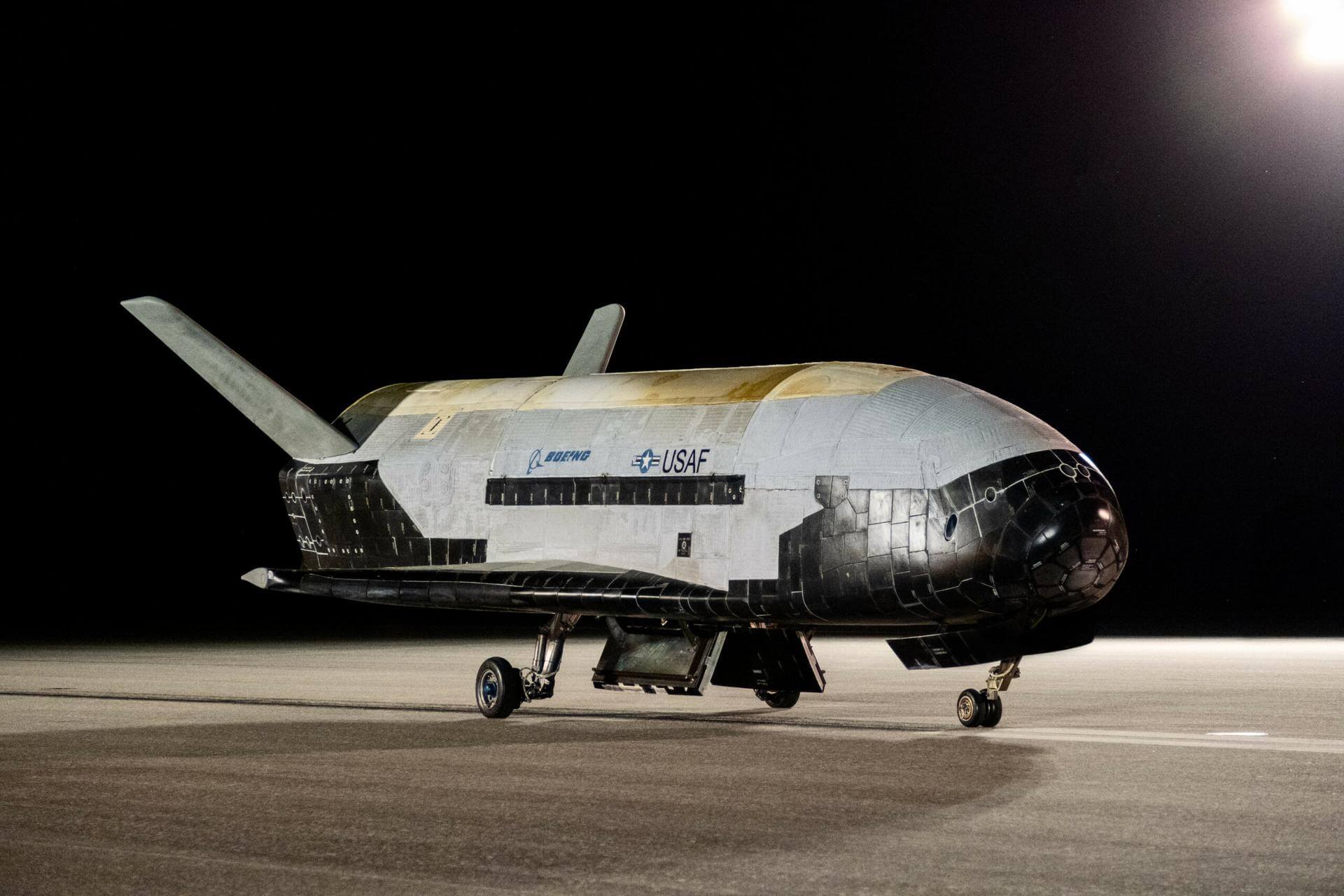
X-37B
Active Cargo Spaceplane Payload Capacity: 227 kg Diameter: 4.55 m Height: 8.92 m()
April 22, 2010
It is boosted into space by a launch vehicle, then re-enters Earth's atmosphere and lands as a spaceplane. The X-37 is operated by the United States Space Force for orbital spaceflight missions intended to demonstrate reusable space technologies.
Flight Life
Multiple years in orbit
Description
The Boeing X-37, also known as the Orbital Test Vehicle (OTV), is a reusable robotic spacecraft. It is boosted into space by a launch vehicle, then re-enters Earth's atmosphere and lands as a spaceplane. The X-37 is operated by the United States Space Force for orbital spaceflight missions intended to demonstrate reusable space technologies. It is a 120-percent-scaled derivative of the earlier Boeing X-40. The X-37 began as a NASA project in 1999, before being transferred to the United States Department of Defense in 2004. Until 2019, the program was managed by Air Force Space Command.
History
In 1999, NASA selected Boeing Integrated Defense Systems to design and develop an orbital vehicle, built by the California branch of Boeing's Phantom Works. Over a four-year period, a total of US$192 million was spent on the project, with NASA contributing US$109 million, the U.S. Air Force US$16 million, and Boeing US$67 million. In late 2002, a new US$301 million contract was awarded to Boeing as part of NASA's Space Launch Initiative framework. The X-37 was transferred from NASA to the Defense Advanced Research Projects Agency (DARPA) on 13 September 2004. Thereafter, the program became a classified project. DARPA promoted the X-37 as part of the independent space policy that the United States Department of Defense has pursued since the 1986 Challenger disaster.
Falcon 9
Starlink Group 6-98
Space Launch Complex 40 - Cape Canaveral SFS, FL, USAA batch of 29 satellites for the Starlink mega-constellation - SpaceX's project for space-based Internet communication system.
Long March 8A
SatNet LEO Group 18
Commercial LC-1 - Wenchang Space Launch Site, People's Republic of ChinaA batch of 9 Low Earth Orbit communication satellites for the Chinese state owned SatNet constellation operated by the China Satellite Network Group.…
Long March 6A
Yaogan 50-01
Launch Complex 9A - Taiyuan Satellite Launch Center, People's Republic of ChinaThe Yaogan 50-01 is a Chinese military “remote sensing” satellite of unknown purposes.
Falcon 9
Starlink Group 6-97
Space Launch Complex 40 - Cape Canaveral SFS, FL, USAA batch of 29 satellites for the Starlink mega-constellation - SpaceX's project for space-based Internet communication system.
PSLV-DL
EOS-N1 and others
Satish Dhawan Space Centre First Launch Pad - Satish Dhawan Space Centre, IndiaSmall Earth observation satellite from NewSpace India Limited (NSIL) for an "Indian strategic user", details TBD. This launch will also carry 18 o…
Falcon 9
Pandora / Twilight rideshare mission
Space Launch Complex 4E - Vandenberg SFB, CA, USAThe Pandora small satellite was selected in 2021 as an inaugural mission in NASA’s Astrophysics Pioneers Program. It includes a 0.45-meter telescope …
Falcon 9
Starlink Group 6-96
Space Launch Complex 40 - Cape Canaveral SFS, FL, USAA batch of 29 satellites for the Starlink mega-constellation - SpaceX's project for space-based Internet communication system.
Falcon 9
Starlink Group 6-88
Space Launch Complex 40 - Cape Canaveral SFS, FL, USAA batch of 29 satellites for the Starlink mega-constellation - SpaceX's project for space-based Internet communication system.
Falcon 9
CSG-3
Space Launch Complex 4E - Vandenberg SFB, CA, USACSG-3 is an Earth observation satellite for the Italian Space Agency, part of a reconnaissance constellation using synthetic aperture radars operatin…
Long March 7A
Shijian 29 A-B
201 - Wenchang Space Launch Site, People's Republic of China2 satellites officially described as for "demonstration of new technologies for spatial targets detection" purposes.

